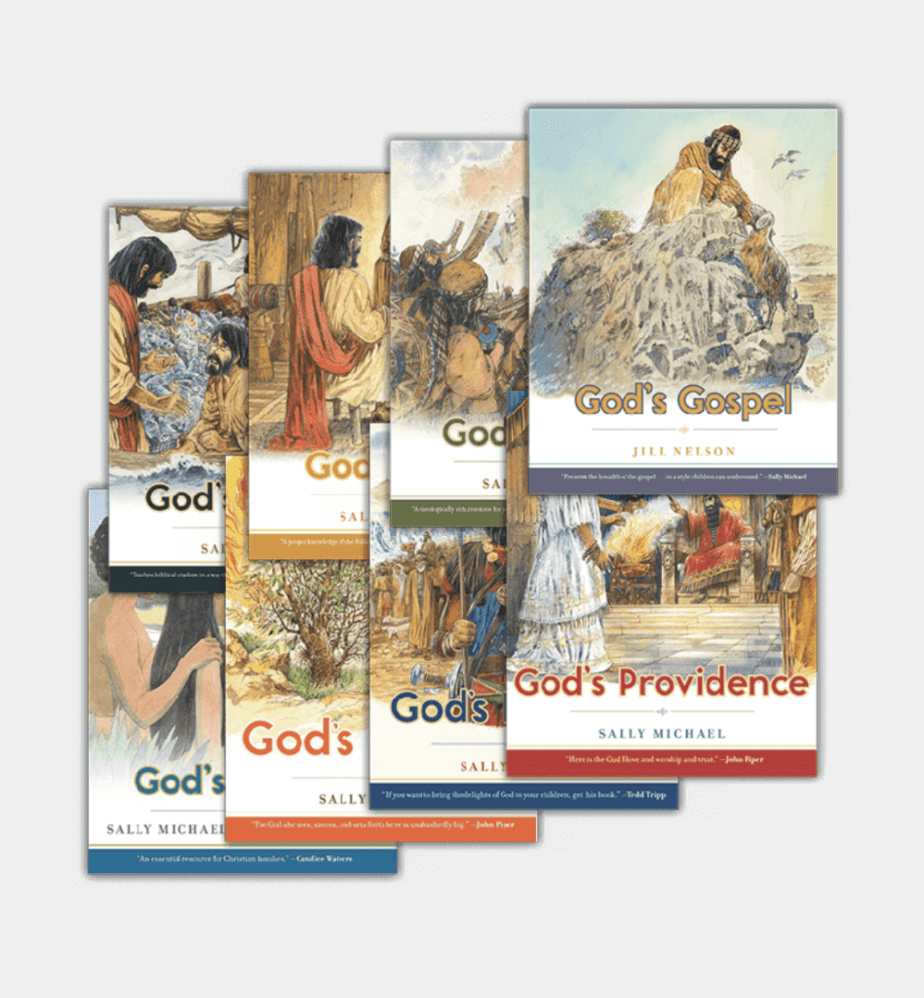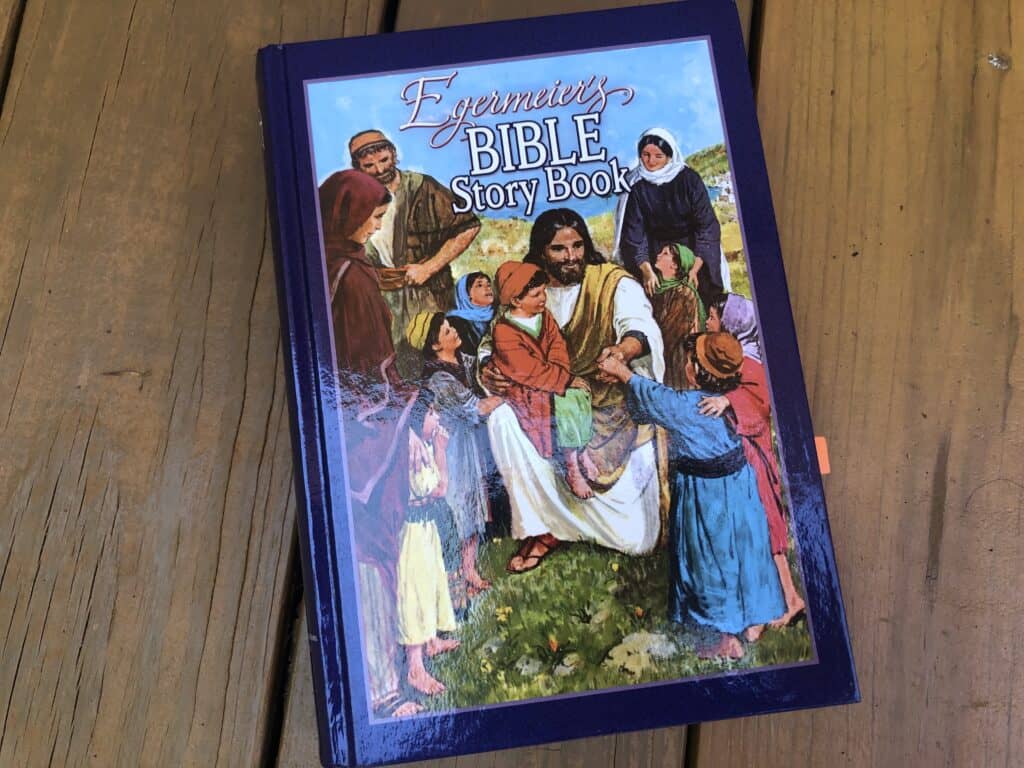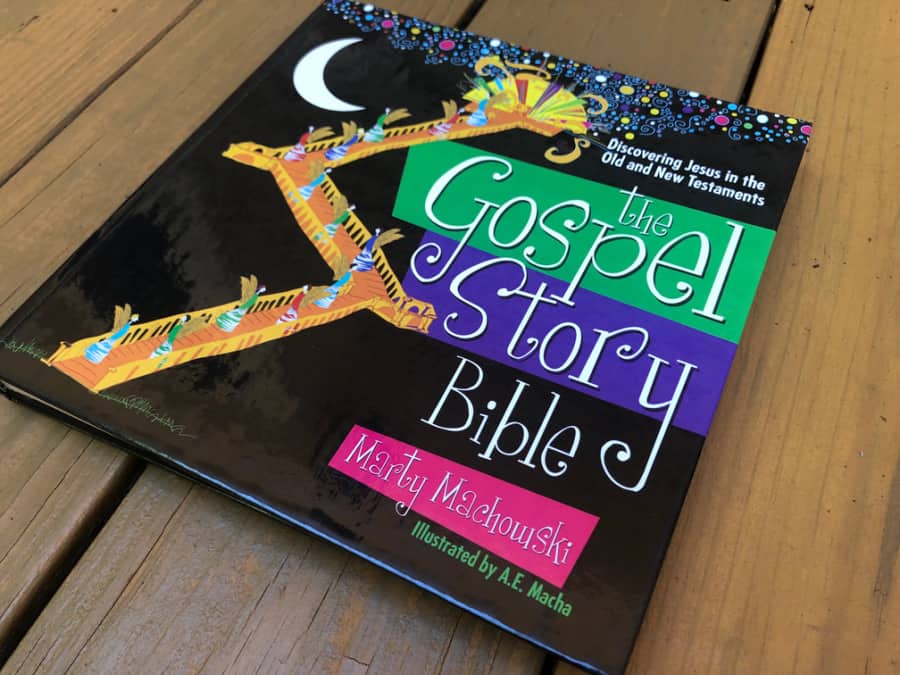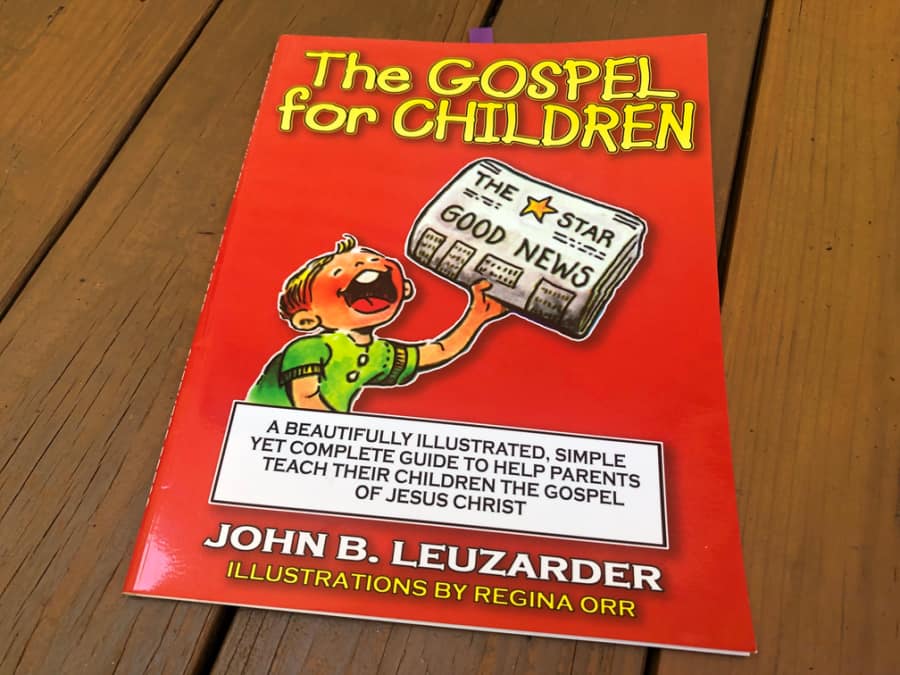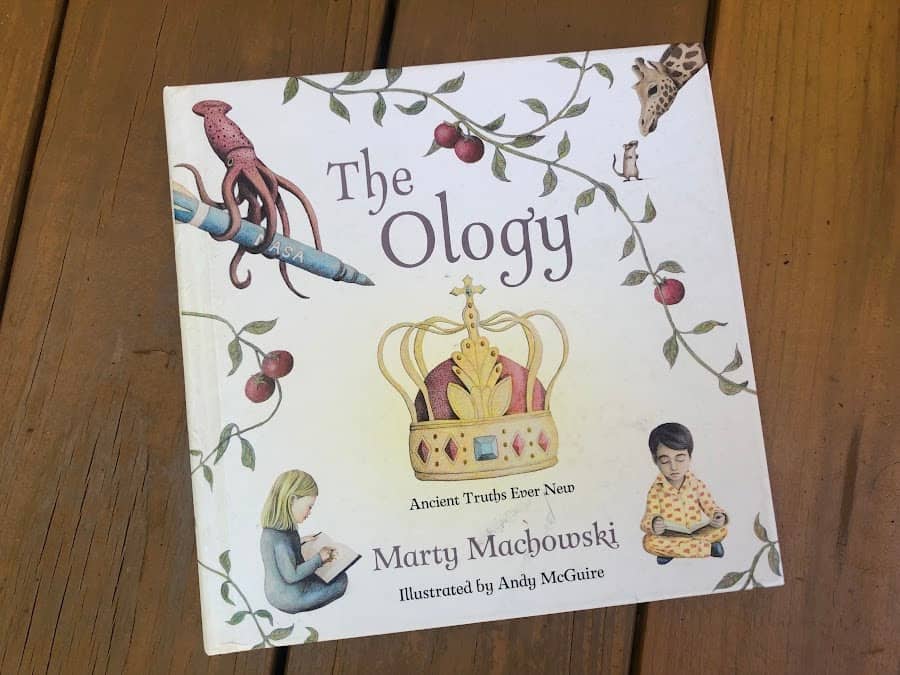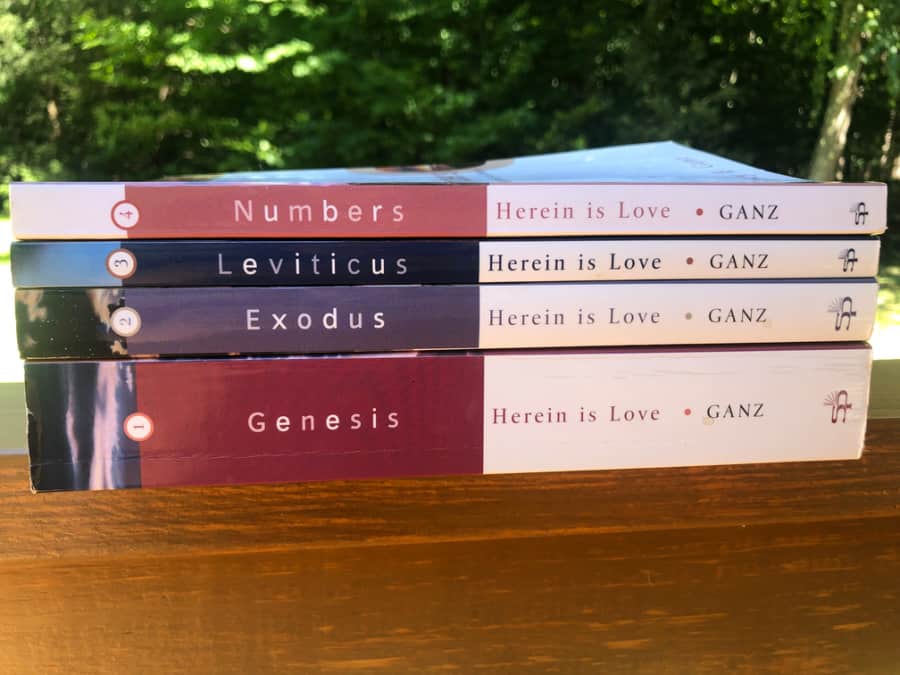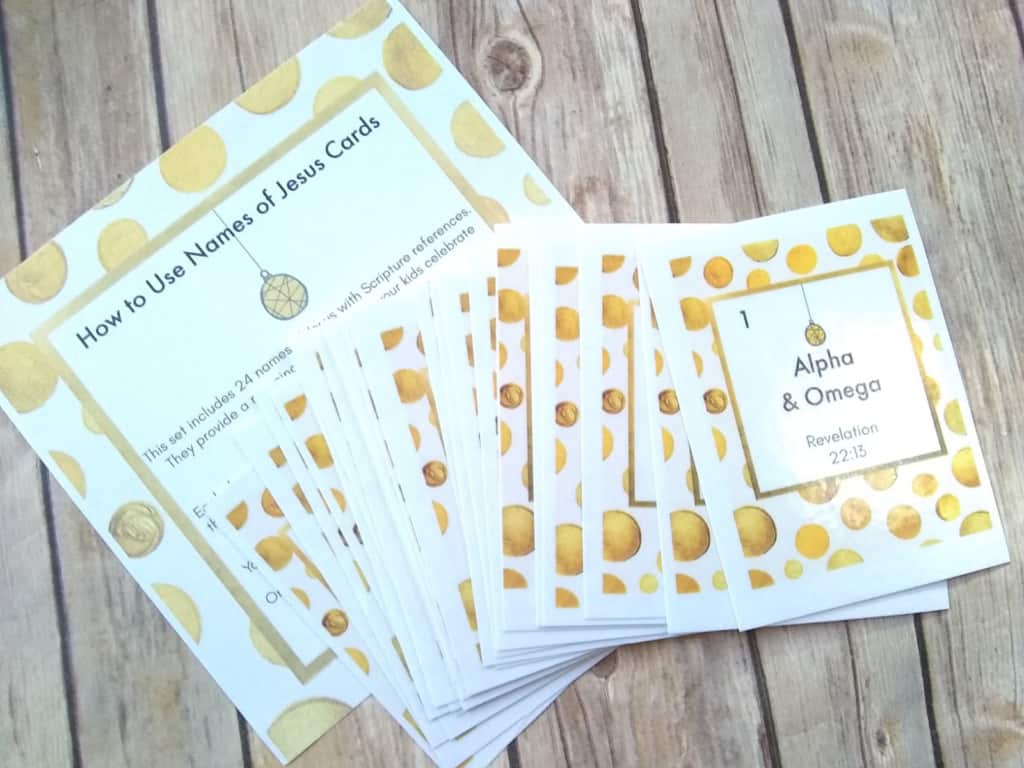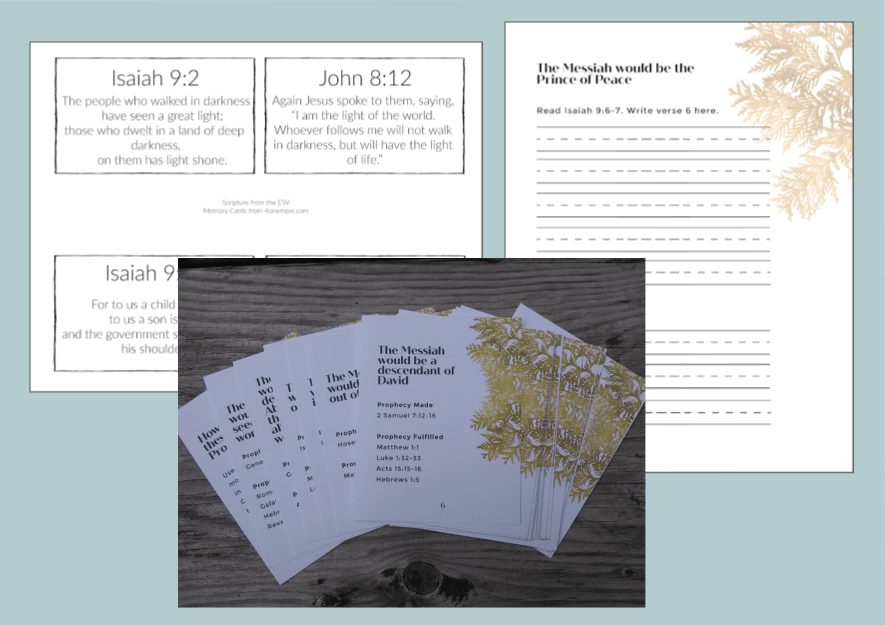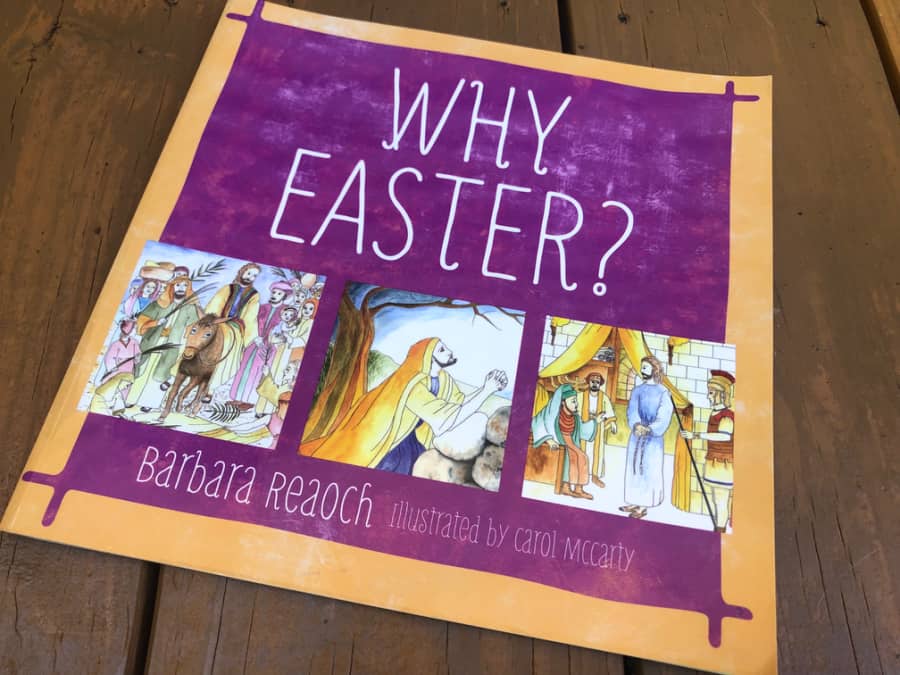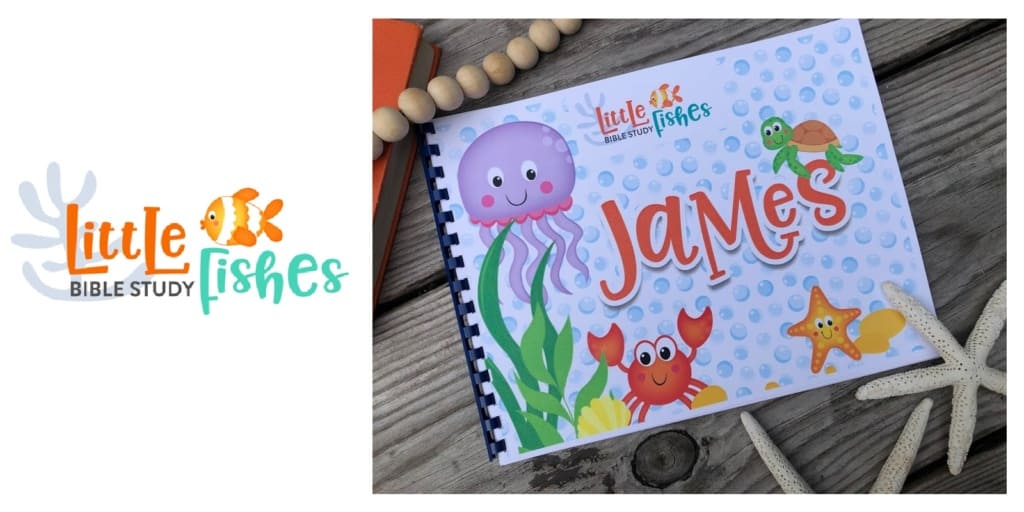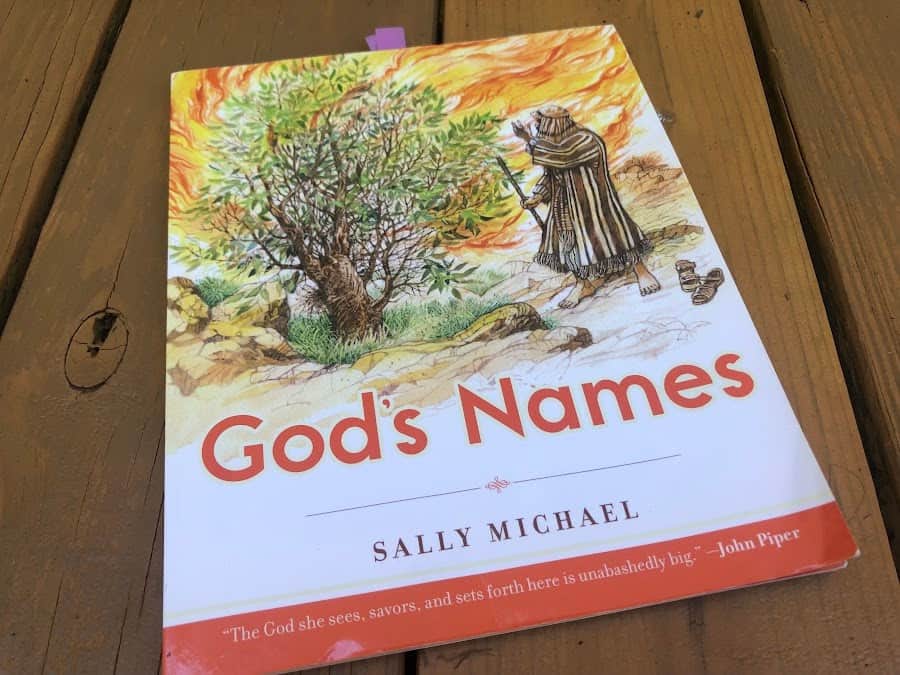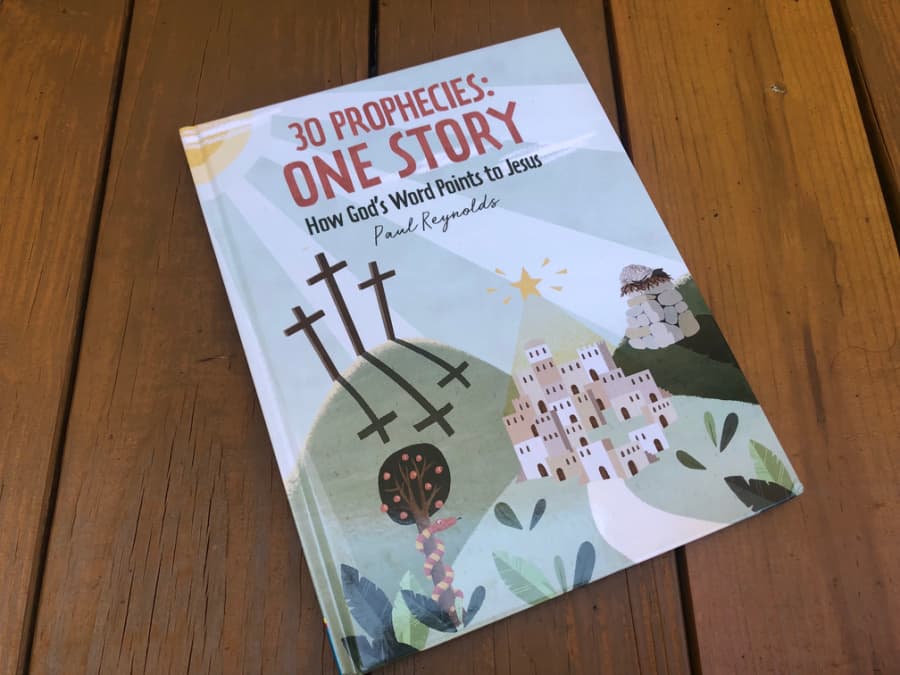If you have elementary aged kids and you’re looking for Gospel centered Bible resources you can use in your homeschool, then you’re going to love this conversation with Sally Michael of Truth78. Sally has been a curriculum developer for decades and she has a heart for reaching the next generation with resources that are grounded in the Gospel.
Plus, I’ll show you the books we’ve used with our kids through the years and that I recommend if you want a simple yet meaningful discipleship plan with your elementary-aged kids and even into middle and high school. I’ve added Sally’s new books to my list!
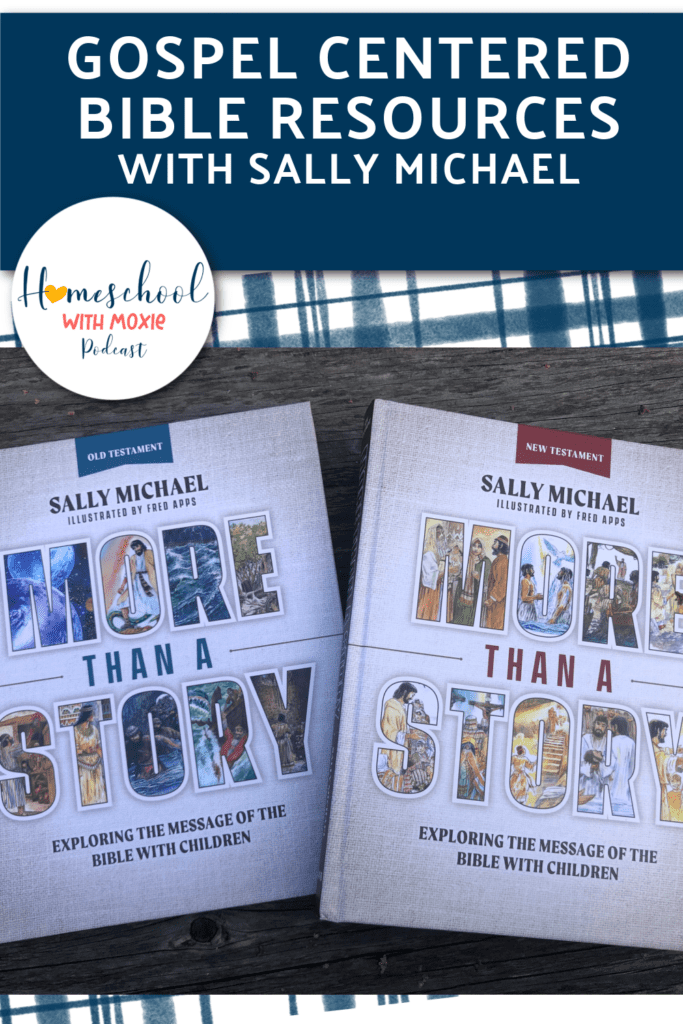
This post contains affiliate links.
Welcome to the show notes for Episode #143 of the Homeschool with Moxie Podcast!
As a former classroom teacher, now homeschooling mom of five, I love to equip and encourage other homeschooling families.
On the Homeschool with Moxie Podcast our goal is to inspire and encourage you with actionable strategies to take you from overwhelmed to confident in your homeschool adventure. Listen to interviews with amazing influencers in the homeschool world and beyond.
Listen to the Podcast – Gospel Centered Bible Resources from Truth78
Sally Michael is a co-founder of Truth78 and has authored curricula and books that are all marked by a passion for developing God-centered resources for the spiritual development of children. For 16 years, Sally served as minister for children at Bethlehem Baptist Church in Minneapolis, under the leadership of John Piper and her husband, David.
In this episode, we discuss discipling the next generation and specifically talk about Sally’s new books – More Than A Story: Exploring the Message of the Bible with Children.
Inside More Than a Story
What is More Than a Story?
More Than a Story is a new kind of Bible resource for children (ages 6-12)—taking them on a chronological journey through the Bible with a God-centered, gospel-focused, discipleship-oriented, theologically grounded perspective. Though the Bible is full of stories, it is MORE THAN A STORY. It is the authoritative Word of God that, throughout its pages, proclaims and magnifies the majestic character of God, His work in this world, and His plan of redemption for sinful men through His Son, Jesus.

More Gospel Centered Resources from Truth78
Sally gives more recommendations of great gospel centered resources that homeschool moms will love. Check them out below!
Making Him Known Books – each of these books has 26 lessons and you can learn about God’s Gospel, God’s Names, God’s Word, God’s Wisdom, God’s Providence, God’s Promise, God’s Battle, and God’s Design
Glorious God, Glorious Gospel – this is an interactive family devotional
Lord, Teach Us to Pray: Family Devotional Guide – This revised 13-week family devotional guide provides six days of devotional ideas per week, plus ideas for a weekly Family Night Activity.
The Very Bad News & the Very Good News – the Gospel story for young children
The Greatest Treasure – Lead children on a journey to discover 10 essential truths of the gospel, which culminate in the greatest treasure of all.
Good News of Great Joy – family Advent resources
The World Created, Fallen, Redeemed, and Restored – the Gospel Plan of God
Foundation Verses – The Foundation Verses are 76 strategically chosen Bible verses designed to give toddlers and pre-readers (ages 2-5) a firm scriptural foundation of basic biblical truth.
Fighter Verses – This Fighter Verses™ compilation of 260 passages will help believers fight the fight of faith. They provide the encouragement we need daily, focusing our thoughts in three main directions: fixing our hearts on the character and worth of our great God; battling the desires of our flesh; and rejoicing in the work of Christ in the gospel.
Mothers: Disciplers of the Next Generation – This booklet will challenge you to look on your mothering with a biblical perspective, to daily seize opportunities to encourage faith in your children, and to rely on Him to accomplish the great work to which He has called you.
A Simple Elementary Homeschool Bible Plan
Don’t fall for the big-box homeschool publishers and their grade-level Bible workbooks. You don’t need them. You can have a meaningful discipleship plan with all your children together. Here are the main books and resources we’ve used through the years with our five children.
If you’re concerned about finances and finding inexpensive options for homeschool Bible, this list is great for that reason too.
Teaching a Bible Chronology in the Early Years
Yes, your young children absolutely need to learn the Bible stories and the chronology of the Bible in the early years. In addition to regularly taking them to church, go ahead and invest in a great children’s Bible storybook for the early years.
Of course, these children’s Bible story books will hit the “highlights” of the Bible and cover the most well-known events and people. But these main events and chronology become the hooks on which they will hang future understanding. You’re building the necessary foundation.
Here are some of our family’s favorite resources from the early years.
Bible Stories
My Favorite Bible Stories is a classic children’s Bible story book originally published in 1967. It includes 46 Bible stories. These stories are one page with a corresponding full page illustration. These make the perfect bedtime story reading with your youngest children.

Another classic Bible story book for children is Egermeier’s. It is advertised as a “complete narration from Genesis to Revelation for young and old” and includes many more stories in its 600+ pages. Originally written in 1963, it includes the vintage Bible illustrations that look like the flannel graph from the era.
This helpful book not only includes hundreds of Bible stories, but it also has over 100 illustrations and a section of “questions and answers on the stories” in the back to help you walk through each story with your children. Also includes biblical maps and diagrams of the temple and Jerusalem.
How all Scripture points to Christ
For a Bible storybook that intentionally weaves every story in the Old and New Testaments into how it points to Christ, you’ll love the Jesus Storybook Bible by Sally Lloyd-Jones. It includes 21 stories from the Old Testament and 23 from the New. With charming illustrations and an engaging style, your kids will love learning how “every story whispers his name.”
The Gospel Story Bible by Marty Machowski is another great option for teaching your children the chronology of the Bible and pointing everything to Jesus. It’s an engaging book with 156 stories from Genesis to Revelation.
One last recommendation here for helping your children to see the overarching message of the whole Bible is Kevin DeYoung’s book, The Biggest Story: How the Snake Crusher Brings Us Back to the Garden.
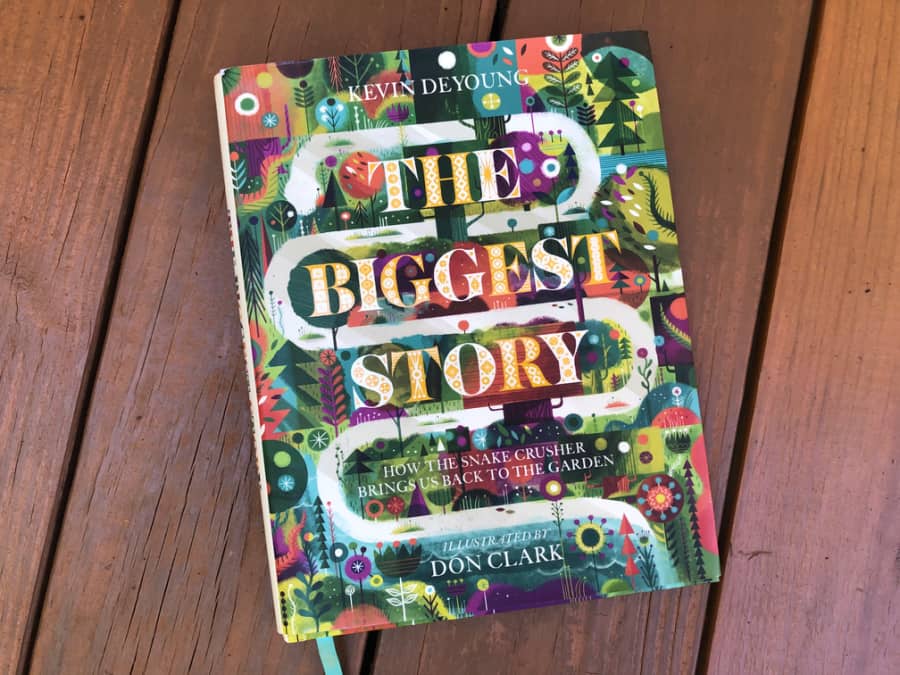
From the book’s dust jacket: this book’s purpose is “connecting the dots from the garden of Eden to Christ’s death on the cross to the new heaven and new earth.” This 126-page book reads like a bedtime story to give kids the big picture and how it all fits together. But if you’d like more retellings of various Bible stories like in a children’s Bible, then you’ll love the newer book by DeYoung, The Biggest Story Bible Storybook for ages 6-12. It includes 104 short chapters that begin in Genesis and end with Revelation.
You can use all of these books to read aloud to your children and discuss. Or, your kids can draw pictures of the stories you are reading about, using a notebooking technique. One of these books might take an entire school year to work through. So I hope you can see how you don’t need an official Bible curriculum to disciple your children and include Bible in your homeschool.
Teaching Doctrine
When you want resources that specifically teach doctrine, there are a few resources and tools that we have used and recommend.
First is the simple book, The Gospel for Children by John B. Leuzarder. This book is presented in an illustrated outline form so that your kids can remember the key points. There are 6 chapter headings and 38 outline points that you can use for memorization purposes in your homeschool Bible time. You can use narration to see if your children understand each point after you discuss it.
Each chapter includes dozens of Bible references, which you can read with your children and also choose a few to memorize.
Another excellent book for teaching doctrine is The Ology: Ancient Truths Ever New by Marty Machowski. This book contains 71 lessons or topics underneath 11 “The Ology” sections. These doctrinal sections cover God, people, sin, promise and the Law, Christ, the Holy Spirit, adoption into God’s family, change, the church, the end times, and God’s Word.
There is a helpful parent guide in the front of this book and instructions on how to use it with your early elementary students (ages 6-9) and then how to use this book to teach systematic theology to your upper elementary students (ages 10-12).
Don’t be fooled by this children’s book. It is deep! You could even assign it to your teens and have them do some biblical research and write about a few of the doctrines presented in this book.
Bible Commentaries for Children
Nancy E. Ganz has written the Herein is Love commentary series for children in about grades 2-3. We made it through a couple of these commentaries in the early years of homeschooling.
About the books:
Herein is Love is a five-volume series of Bible commentaries for parents to read to their children. They provide what children need most—solid truths to grow in. In these books, Nancy Ganz draws out the beautiful implications of the Old Testament narrative that are foundational for Christian faith.
The beginning books of the Bible are essential to our understanding of God’s redemptive story. The Herein is Love series creatively focuses our attention on the events that bring this story to life, combining the richness of literature and the depth of a commentary.
Bible Memorization and Catechism
Our absolute favorite tool for including Bible memory and catechism review in our homeschool is the Bible memory box.
I chose different passages that I wanted my kids to learn and added them to index cards in our Bible memory box. Then I printed out this Catechism for Young Children adapted from the Westminster Catechism for Children and glued them on index cards for our Bible memory box.
You could include a Bible memory box into your morning time and make it a regular part of your homeschool day with all your kids.
Special Resources for the Holidays
If you want special resources to use for holidays like Advent, Christmas, and Easter, here are some that we have used and recommend.
Advent & Christmas Homeschool Bible Resources
We love using more hands-on approaches during Advent. So some years we’ve used Names of Jesus cards during the month of December. Each day we choose a new card, read the corresponding verse and talk about why Jesus has that name. You can choose the string the cards in your homeschool room like garland or just keep them in a bowl or basket. You could also choose some verses to memorize throughout the month or add them to your copywork.
Another wonderful tradition is to make a Jesus tree. So instead of printing out cards with the names, all through the month of December your kids can add a special ornament to the “Jesus tree.”
The birth of Christ brought so many Prophecies Fulfilled! Kids of all ages in your homeschool can study through these prophecies leading up to Christmas. This Advent Bible Reading Plan will even engage your teens.
My friend Julie Polanco recently published an Advent devotional book called Who is Jesus? An Advent Journey. This devotional book will work for multiple ages, including your teens.
Easter Homeschool Resources
During the weeks leading up to Easter, we’ve used an Easter Tree when the kids were younger.
If you want a book with lessons that span 4 weeks (28 days), then you’ll love Why Easter? by Barbara Reach. It’s an illustrated book that gives you a short daily lesson to read, discussion questions, a weekly memorization passage, and a song to learn.
Little Fishes Bible Studies for K-4
Our sponsor for this episode is Little Fishes Bible Studies. Even your kids in the early elementary years can start to read and study the actual text of Scripture. That’s what Little Fishes Bible Studies are all about! Teaching kids how to observe, interpret, and apply Scripture in context.
Your children in grades K-4 can enjoy a gentle introduction to the inductive Bible study method. Grab FREE samples below and then use the coupon code INDUCTIVE20 to save 20% off any Bible resource!
Bible Resources for the Upper Elementary Years
Once your children have a solid foundation on the basic Bible chronology, stories, and doctrine, then you’re ready to help them dive even deeper. But you still do not need to purchase a grade level Bible curriculum from an expensive big-name publisher. You just need a few trusty resources and tools.
Here’s what I recommend using in the upper elementary years, or from about grades 4 through 6.
More Than a Story
Now that Sally Michael has published the More Than a Story books – one each for the Old and New Testaments – these will be my go-to recommendation for upper elementary kids. Be sure to check out all the details above, including our interview with Sally on the Homeschool with Moxie Podcast.
Each hardcover book includes approximately 90 lessons, so you could use one book for an entire homeschool year, or if you move quickly, you could use both in a year. But I suggest taking your time! There is so much in each of these books. They are definitely geared toward your upper elementary kids.
You’ll love the style in which these books are written. They will work beautifully during a homeschool morning time with multiple kids. They include discussion questions, verses to memorize, and more.
Self Study Workbooks for Inductive Bible Study
Depending on the age and maturity level of your upper elementary students, you could use either the Little Fishes Bible Studies with them or graduate to the Self Study Workbooks, which take kids through a paragraph-by-paragraph study of entire books of the Bible!
We have optional video lessons which your visual learners will appreciate. And best of all, you can enjoy family pricing – for one price, download and print the workbooks for all the kids in your home.
Or you can find beautiful physical workbooks on Amazon.
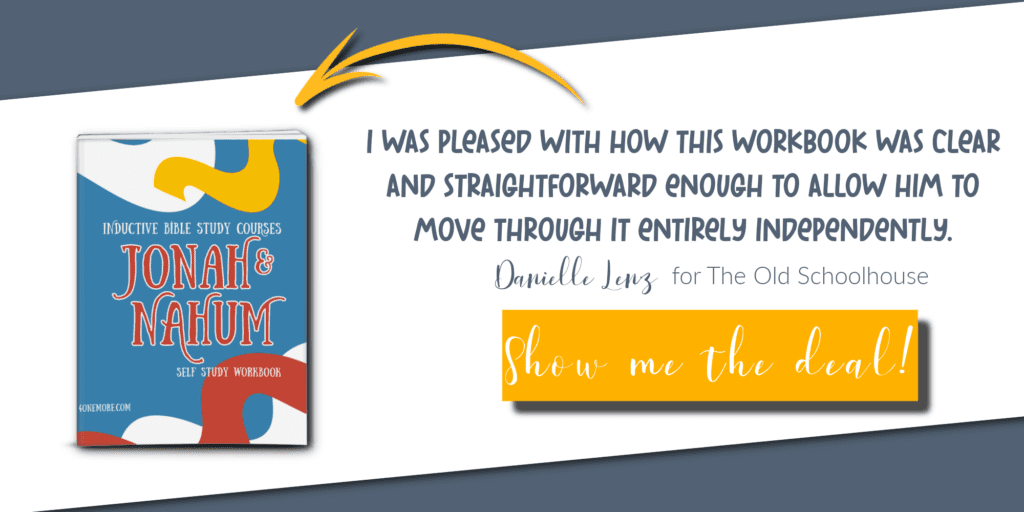
Give your kids the gift of Bible literacy as they grow older. Once they have a good foundation of the Biblical chronology and the Bible stories, your kids need to learn to open and read the Bible. They need to learn how to understand verses in context. The inductive Bible study method gives them the tools they need for this life skill.
Additional Bible Resources for Grades 4-6
When your kids are in the upper elementary years, you can work to memorize whole chapters of the Bible together. In addition, see if they can finish out the catechism from the Bible memory box.
We’ve also used books like God’s Names by Sally Michael and 30 Prophecies: One Story by Paul Reynolds. The Ology by Marty Machowski, which was listed above for younger children, is a great book for older kids as well.
What about middle and high school?
Great question! Our teens need to be given the tools to study the Bible for themselves once they hit middle and high school. This is especially true if your kids have had the privilege of being in church their entire lives. They likely know all the Bible stories and need to be challenged to understand and apply Scripture in context.
Some of your kids will love the Road Map Through the Bible from Family Style Schooling. In this simple plan, they’ll read through most of the Bible in a year to give them a great overview. Her plan is a free download and includes 20 points of interest each month to focus the reading.
I think the best resource you can use in middle and high school is inductive Bible study through entire books of the Bible. You don’t even have to purchase curriculum!
Learn how to create your own homeschool Bible curriculum using the inductive method with just a Bible, some colored pens, and a plan.
If you want a done-for-you inductive study for your teens, then they’ll love the Self Study Workbooks and optional video lessons. We walk you through how to assign an objective grade on the homeschool transcript using our studies.
Or enroll your teens into the Gospel of John online + independent course. Yes! We include quizzes, assessments, and papers in the class so you can be confidence to assign an objective grade on the homeschool transcript.
